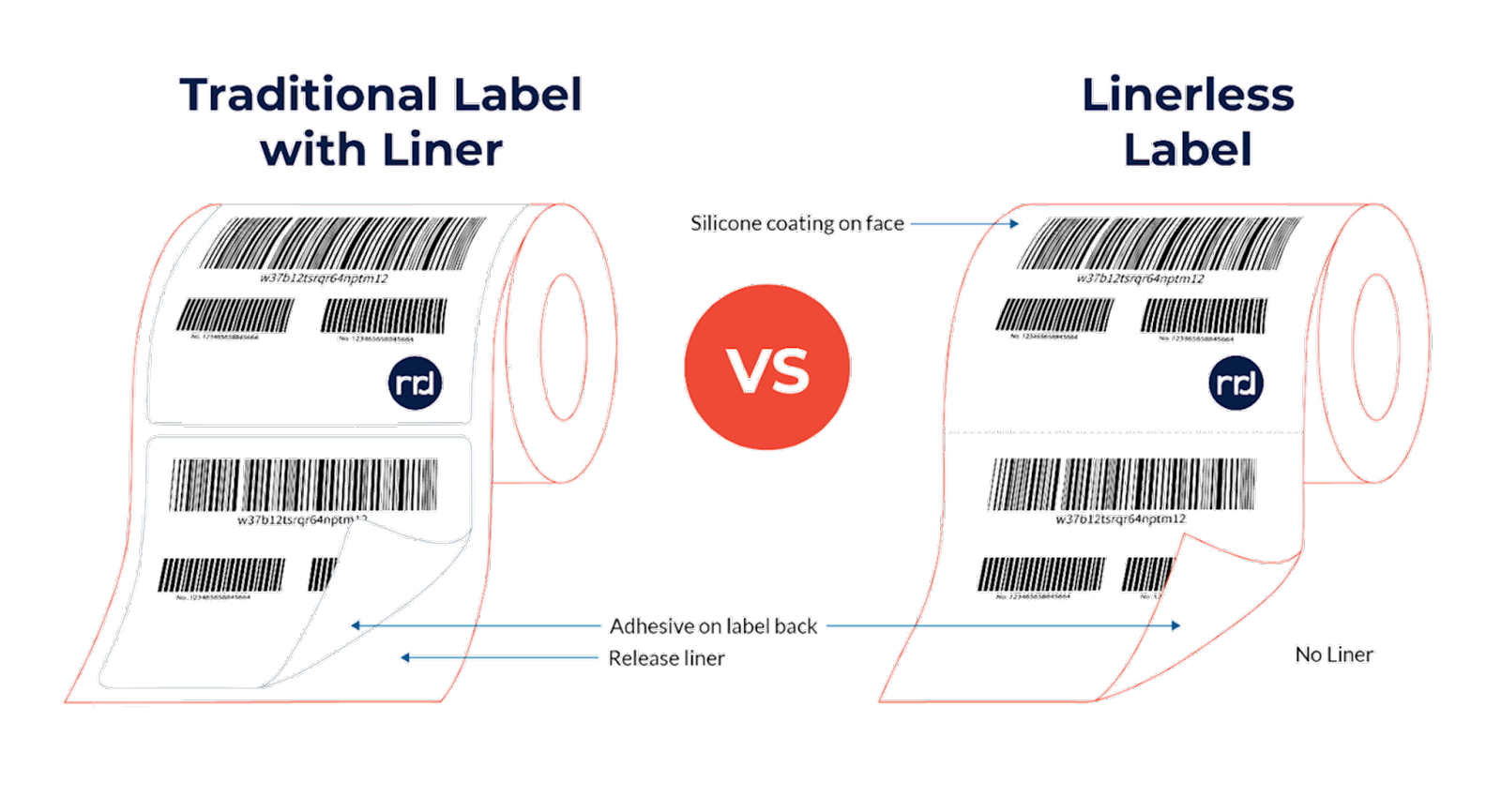VersaTac™ Liner-Free Labels: FAQs Our Clients Asked Before Making the Switch
1/18/2023 Judy Marx

The FAQs our clients have asked about RRD's VersaTac™ Liner-Free linerless labels
The following are what we might categorize as “frequently asked” — and our answers to them cut right to the chase. (If you’d like to talk about any of these at length, just let us know.)
- Why go linerless?
- Will switching to linerless labels have any effect on my business’ operational costs?
- Is the process of converting to linerless time-consuming and expensive?
- Are RRD's VersaTac™ Liner-Free linerless labels a more eco-friendly option?
- How do we get started on a linerless strategy?
- Where can I buy VersaTac Liner-Free labels online?
- Does a lack of liner affect a label’s durability or adherence to surfaces?
- Are the adhesive options limited when it comes to going linerless?
- Is there anything else I should know about VersaTac Liner-Free linerless labels as I evaluate my labeling options?
- Do you have any client success stories you can share where VersaTac Liner-Free linerless labels played an important role?
1. Why go linerless?
In a market where businesses find themselves getting pinched by material availability at every turn, labels have proven to be no exception. This is particularly true for conventional labels — those that utilize a liner, where the label is pulled off a silicone-coated backer.

For our clients, RRD's VersaTac Liner-Free labels, in many cases, have provided a more viable, greener, market-ready option. And the current demand for them became a driving reason for our installation of an additional linerless press. This investment has helped us increase our capacity for direct thermal linerless label production by roughly 40%.
If you’re unfamiliar with the value proposition around linerless, look no further. RRD developed and patented this label type in the early nineties. As a pioneer in this space, we’ve answered a number of questions around linerless over the years.
2. Will switching to linerless labels have any effect on my business’ operational costs?
It's very possible. According to Alexander Watson Associates, liners account for approximately 20% of a pressure sensitive label’s total applied cost. A linerless label’s reduced footprint increases the likelihood for the following:
- More labels, fewer rolls — up to 50% more labels per roll — which translates to a reduction in downtime required to change rolls
- Minimized costs through reduced freight, reduced warehousing space, and elimination of liner disposal
- Improved workplace safety through the removal of slippery silicone liners
3. Is the process of converting to linerless time-consuming and expensive?
Conventional labels and their linerless counterparts are not manufactured on the same type of press. Making the transition to linerless may require an investment in new equipment (e.g., printer and firmware) — this is linerless’ most common barrier to entry for companies. Which is why working with a labeling partner who already has the capabilities and capacity makes a good deal of sense.
It's also important to note that regular thermal desktop and mobile printers do not accommodate linerless labels.
4. Are RRD's VersaTac Liner-Free linerless labels a more eco-friendly option?
According to a survey RRD recently conducted of packaging decision makers, almost all (94%) respondents agree that sustainability is a key consideration in packaging and label decisions.
If you are looking for a more sustainable labeling option, RRD's VersaTac Liner-Free labels are worth a closer look.
The silicone-coated backer pulled off your traditional label is typically non-recyclable. It’s really one of the biggest drivers of waste in a label’s lifecycle. And because they contain silicone, label liners can’t be burned, and they also won’t decompose.
6. Where can I buy VersaTac Liner-Free labels online?
United Ad Label, an RRD Company, has VersaTac Liner-Free linerless in stock and available for immediate shipment. Visit the Linerless Labels page on the UAL website to learn more about what we offer and place your order today.
Place your order today
7. Does a lack of liner affect a label’s durability or adherence to surfaces?
We’ve had to debunk the myth (more than once) that the lack of a liner actually compromises a label’s quality. That’s just not the case. This is simply a leaner label.
The release coating used on a VersaTac Liner-Free linerless label has been developed to not only prevent the adhesive from sticking to the labels beneath it, but also serve as a protective barrier against UV moisture, and chemicals. This ensures durability and a longer shelf life.
8. Are the adhesive options limited when it comes to going linerless?
Absolutely not. At RRD, all of our VersaTac Liner-Free labels are available to run with CleanTac® (repositional), VersaTac adhesive, or permanent adhesives. Regarding the adhesive’s stickiness, that is determined by the adhesive pattern on the back of each label roll. From diamond-shaped to multiple or single stripe, the patterns can also vary depending on application.
9. Is there anything else I should know about VersaTac Liner-Free linerless labels as I evaluate my labeling options?
While linerless labels come in limited shapes (i.e., rectangles and squares), there is flexibility to be had in terms of label sizing. Unlike many conventional labels that are cut to a predetermined size, RRD's VersaTac Liner-Free labels can print multiple sizes of labels on a single roll — think shipping label as well as a separate barcode label.
At RRD, our VersaTac Liner-Free label solution includes the option to add timing bars as a start / stop gap sensing mode and perforations, which increases efficiency for the end user with faster, easier, and cleaner tears. The product line is customizable and includes decorative linerless for glass, window, and door manufacturers.
10. Do you have any client success stories you can share where RRD's VersaTac Liner-Free linerless labels played an important role?
These five case studies should help illustrate the beneficial role our linerless labels played for our clients’ businesses:
Judy Marx is a Business Development Manager for RRD Packaging and Labels.